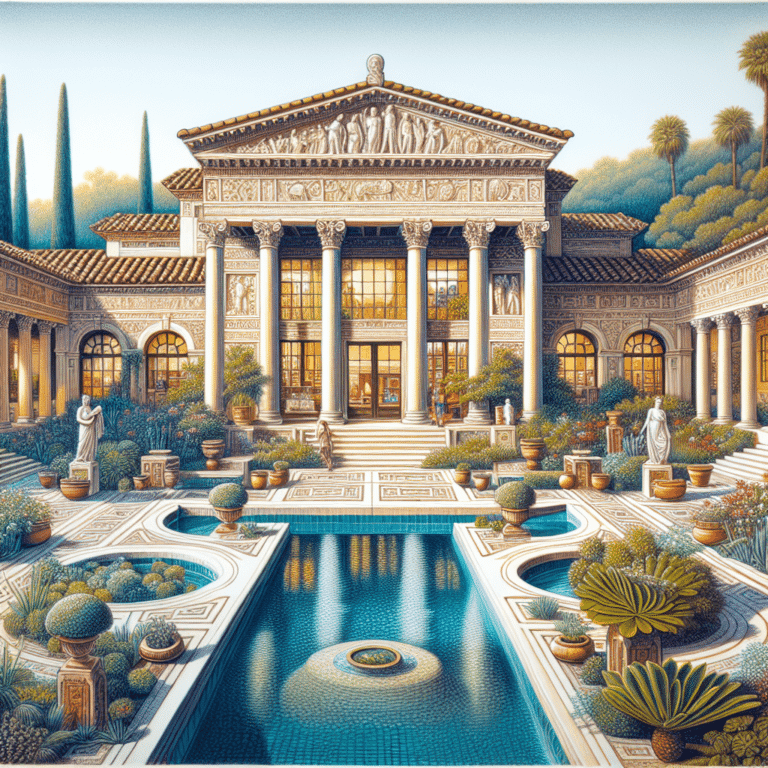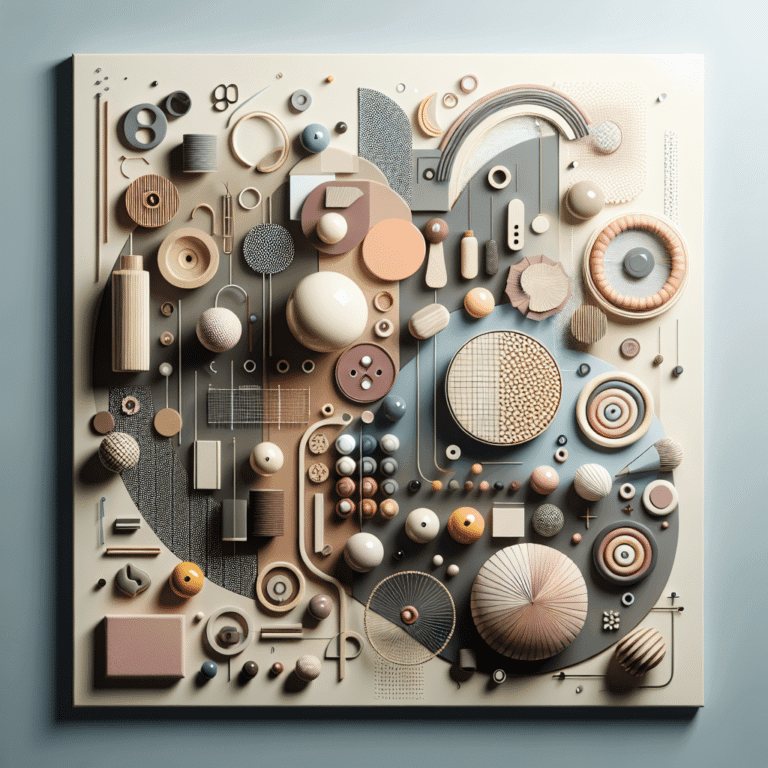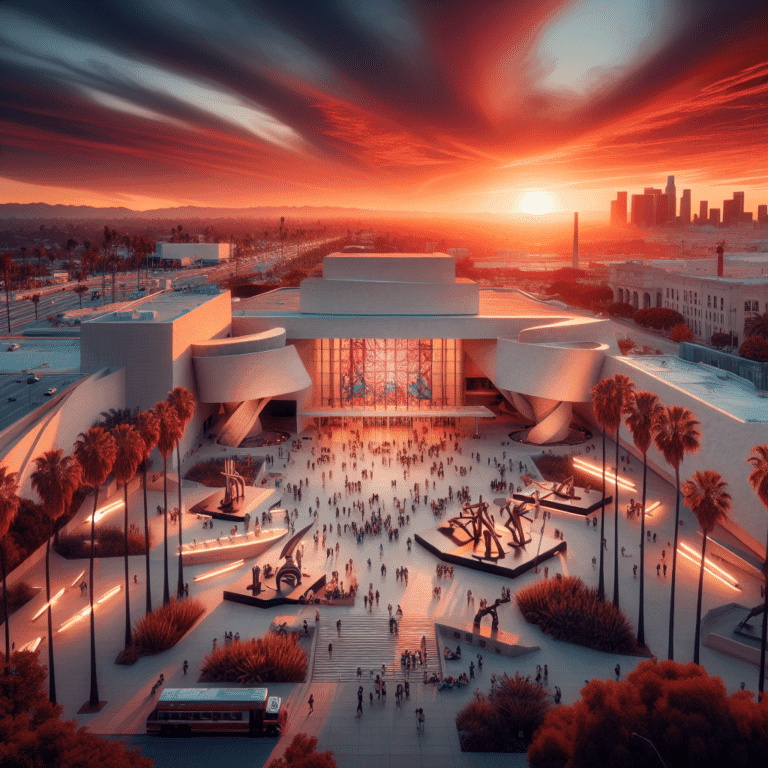Natural History Museum of Los Angeles County Review
Discovering NHM Exhibits
Visiting the Natural History Museum of Los Angeles County was an exhilarating experience, especially when I explored the remarkable exhibits that captured my imagination. Two highlights stood out: the Dinosaur Institute and the treasures of the Mineral Sciences Department.
Dinosaur Institute Highlights
The Dinosaur Institute at the museum houses an incredible collection of tetrapods from the Mesozoic Era. I was amazed to see fine fossil specimens of dinosaurs, including birds, pterosaurs, and marine reptiles. The collection also features rare fossil materials, such as skin impressions and eggs, which added to the thrill of my visit.
One of the most fascinating parts was observing the holotypes and the growth series of the infamous Tyrannosaurus rex. This display brought to life the incredible evolution of these majestic creatures. For anyone who loves dinosaurs, this section is a must-see.
| Exhibit | Description |
|---|---|
| Dinosaur Skeletons | Impressive displays of various dinosaur species |
| Rare Fossils | Includes skin impressions and eggs |
| Tyrannosaurus rex Growth Series | Unique view of the life stages of T. rex |
For more on the incredible collections, check out the Natural History Museum of Los Angeles.
Mineral Sciences Department Treasures
The treasures in the Mineral Sciences Department were equally captivating. The museum boasts one of the most exceptional mineral and gem collections I’ve ever seen. I was particularly struck by the “Empress of Uruguay,” a stunning giant amethyst geode weighing an astonishing 2.5 tons. This gem truly sparkled and showcased the beauty of natural formations.
Additionally, the museum’s collection includes significant specimens like the 13-pound “Esperanza” meteorite, which is one of the largest in the world. It was incredible to stand next to such a rare piece of cosmic history.
| Treasure | Description |
|---|---|
| “Empress of Uruguay” Geode | A giant amethyst geode weighing 2.5 tons |
| “Esperanza” Meteorite | One of the largest meteorites on display |
| Fossils from La Brea Tar Pits | Unique specimens from local history |
The combination of these exhibits made my visit to the NHM unforgettable. If you’re seeking a fun and educational experience in Los Angeles, don’t miss the chance to explore these incredible displays at the natural history museum of los angeles county.
Exploring NHM Collections
During my visit to the Natural History Museum of Los Angeles County, I was thrilled to dive into the fascinating collections on display. Each section had its own unique charm, and I couldn’t wait to explore the entomology marvels, insights from Rancho La Brea, and treasures from vertebrate paleontology.
Entomology Marvels
The Entomology Department at the museum houses over 5.8 million specimens of insects and spiders, making it the largest collection in Southern California. The collection’s strength lies in its specimens of ants, phorid flies, scarab beetles, and moths from North and Central America. I was amazed to learn that museum scientists conduct research on systematics, the evolution of major groups, and even fossil insects found in amber dating back to as early as 1913.
| Specimen Type | Count |
|---|---|
| Ants | Extensive |
| Phorid Flies | Extensive |
| Scarab Beetles | Extensive |
| Moths | Extensive |
| Total Insect Specimens | 5.8 Million |
For anyone intrigued by the world of insects, this exhibit is an absolute must-see.
Rancho La Brea Insights
The Rancho La Brea collection is one of the world’s richest late Pleistocene terrestrial assemblages, featuring over 3.5 million specimens collected from Hancock Park in Los Angeles. This collection offers incredible insights into the end of the last Ice Age in North America. I was particularly fascinated by the microfossils collected since 1969 and the ongoing salvage projects that continue to uncover our planet’s history.
| Specimen Type | Count |
|---|---|
| Total Specimens | 3.5 Million |
| Microfossils | Ongoing Research |
The stories these fossils tell about ancient life and the environment are simply captivating, making it a highlight of my visit.
Vertebrate Paleontology Treasures
The Vertebrate Paleontology Department at the museum contains over 150,000 cataloged specimens of fossil vertebrates, ranging from tiny teeth to massive whales. This collection primarily focuses on fossils from California, the southwestern U.S., and the northwestern portion of Mexico, with a significant representation of fossil mammals from the Cenozoic era.
| Specimen Type | Count |
|---|---|
| Total Fossil Specimens | 150,000 |
| Focus on Fossil Mammals | Significant |
Among the exceptional specimens are dinosaur skeletons and even fossils from the La Brea Tar Pits. The depth of history this collection captures is truly astounding.
For anyone interested in exploring history through the lens of natural sciences, the Natural History Museum of Los Angeles County is an incredible destination. Each collection offers a unique glimpse into the past, making it a perfect outing for individuals or families looking to enrich their knowledge and have fun.
NHMLAC Experience
My visit to the Natural History Museum of Los Angeles County (NHMLAC) was an unforgettable experience, filled with fascinating exhibits and locations. The NHMLAC comprises several venues that I had the pleasure of exploring, including the Natural History Museum, the La Brea Tar Pits, and the William S. Hart Museum. Each site offers its own unique insights into history and nature.
Museum Locations
The NHMLAC is not just one museum but a collection of sites dedicated to showcasing the natural and cultural history of our world. Here’s a quick overview of the locations I explored:
| Location | Description |
|---|---|
| Natural History Museum | Features outstanding exhibits like the Dinosaur Hall and the Gem and Mineral Hall, along with outdoor Nature Gardens. |
| La Brea Tar Pits | Showcases Ice Age fossils and ongoing excavations, providing a look at ancient life in Los Angeles. |
| William S. Hart Museum | Offers tours of a historic mansion and a glimpse into the life of Hollywood cowboy legend William S. Hart. |
For more information on other amazing venues in Los Angeles, check out our list of the best los angeles museums.
NHM Attractions
The Natural History Museum is filled with incredible attractions that captivated my attention. Some highlights include:
- Dinosaur Hall: Home to a range of dinosaur skeletons, this exhibit was truly awe-inspiring. I felt like I had traveled back in time!
- Age of Mammals: This exhibit showcases life after the dinosaurs, featuring large mammal fossils and interactive displays.
- Gem and Mineral Hall: The sparkling gems and minerals on display were mesmerizing. I learned about their formation and significance.
The NHM also emphasizes contemporary themes related to the environment and the transformation of Los Angeles, making it a perfect mix of historical and modern insights. For anyone looking to explore the wonders of nature, this museum is a must-visit.
William S. Hart Museum Visit
Visiting the William S. Hart Museum was a highlight of my trip. The museum is set on a picturesque 166-acre ranch that once belonged to Hollywood’s cowboy star William S. Hart. The mansion itself is a treasure trove of Hart’s possessions and provides a glimpse into his life and the film industry of his time.
During my visit, I enjoyed:
- Guided Tours: Learning about Hart’s legacy and the history of early Western films made the tour both educational and entertaining.
- Wild Bison Encounter: I was thrilled to see a herd of wild bison roaming the grounds, adding to the unique experience of the museum.
The combination of history, nature, and art at the William S. Hart Museum is truly captivating. For more information about other museums, consider visiting the La Brea Tar Pits and Museum, which offers an exciting look at Ice Age discoveries.
Overall, my experience at NHMLAC was enriching and exciting, and I left with a newfound appreciation for the natural world and its history.
La Brea Tar Pits
Ice Age Discoveries
Visiting the La Brea Tar Pits was like stepping into a time machine that transported me back to the Ice Age! This incredible site is known as the world’s most significant portal to the Ice Age, showcasing an astonishing collection of fossils from the last 50,000 years. I was fascinated to learn about the creatures that roamed the land, such as saber-toothed cats, mammoths, dire wolves, and mastodons. The tar pits also contain microfossils of insects, plants, mammals, and reptiles that help paint a vivid picture of life in the region before human habitation. These discoveries offer valuable insights into how climate and habitat changes might affect the environment today (Natural History Museum of Los Angeles County).
| Fossil Type | Example Species | Period |
|---|---|---|
| Large Mammals | Mammoths | Late Pleistocene |
| Carnivorous Mammals | Saber-Toothed Cats | Late Pleistocene |
| Canids | Dire Wolves | Late Pleistocene |
| Herbivorous Mammals | Mastodons | Late Pleistocene |
Fossil Excavations
The fossil excavation process at La Brea Tar Pits is nothing short of thrilling. I learned that over 3.5 million specimens have been collected from the site, making it one of the richest late Pleistocene terrestrial assemblages in the world. The ongoing salvage projects provide a unique opportunity to understand more about the end of the last Ice Age in North America. Each excavation reveals new secrets about the creatures that once inhabited this area, and it was exciting to see the scientists at work, carefully unearthing fossils that have remained preserved for thousands of years (Natural History Museum of Los Angeles).
| Excavation Facts | Details |
|---|---|
| Total Specimens | Over 3.5 million |
| Main Discoveries | Saber-toothed cats, mammoths, dire wolves, mastodons |
| Collection Start Year | 1969 |
| Research Importance | Understanding Ice Age life and climate impacts |
The La Brea Tar Pits are not just a museum; they are a living laboratory that continues to uncover the mysteries of the past. If you’re looking for a fun and educational experience in Los Angeles, this site is a must-visit! For more exciting museums, you can check out the best los angeles museums to plan your next adventure.
NHMLAC Community Engagement
2023 Community Events
In 2023, the Natural History Museum of Los Angeles County (NHMLAC) hosted a variety of thrilling community events that created numerous opportunities for interaction and outreach. These events were designed to foster connections with people and provide engaging experiences that highlight the museum’s extensive collections and educational programs.
| Event Name | Date | Description |
|---|---|---|
| Family Science Day | March 15 | A fun-filled day for families to explore hands-on science activities and demonstrations. |
| Night at the Museum | June 10 | An exciting evening where guests could enjoy exclusive after-hours access to exhibits. |
| Nature Walks | August 5 & 19 | Guided tours through local parks to learn about native plants and wildlife. |
| Fossil Fest | October 21 | A celebration of paleontology with interactive exhibits and expert talks. |
These events not only showcase the museum’s commitment to education but also strengthen its role as a cultural hub in Los Angeles. For more information about additional attractions and events, check out our guide to the best Los Angeles museums.
Outreach Programs
NHMLAC is dedicated to engaging the community through various outreach programs that promote education and awareness of natural history. These programs include:
- School Programs: Interactive sessions designed for students to learn about natural history through hands-on experiences.
- Community Workshops: Workshops aimed at teaching skills related to conservation and ecology.
- Virtual Learning: Online programs that allow individuals of all ages to explore the museum’s collections from home.
The museum plays a key role in preserving and showcasing the natural history of Los Angeles and beyond, serving as a hub for scientific research and community engagement (ScienceDirect). The NHMLAC holds over 35 million specimens and 1.3 million archaeological objects, making it one of the largest natural history collections in the western United States (Natural History Museum of Los Angeles County).
Through these outreach initiatives, NHMLAC aims to inspire curiosity and promote a deeper understanding of the natural world. Whether visiting the La Brea Tar Pits and Museum or participating in educational programs, visitors can engage with the wonders of natural history in exciting ways.
NHM Legacy
Founding History
I was amazed to learn that the Natural History Museum of Los Angeles County (NHMLAC) was founded in 1913. Over the years, it has grown to become the largest natural and historical museum in the western United States. This incredible institution was established to celebrate and explore the rich natural history of the region, and it continues to serve as a vital resource for locals and visitors alike. The museum’s commitment to education and research has allowed it to flourish, making it a must-visit destination for anyone interested in the wonders of the natural world.
NHMLAC Contributions
The NHMLAC holds over 35 million specimens and 1.3 million archaeological objects in its research collections, making it one of the largest collections in the world (ScienceDirect). The museum plays a key role in preserving and showcasing the natural history of Los Angeles and beyond. It serves as a hub for scientific research, education, and community engagement, offering numerous programs and events that connect the public with the fascinating world of natural history.
| Contribution Type | Description |
|---|---|
| Research Collections | Over 35 million specimens and 1.3 million archaeological objects |
| Educational Programs | Hands-on learning experiences for all ages |
| Community Engagement | Events and outreach programs to connect with locals |
Visiting the NHMLAC offers not only an exciting glimpse into our planet’s past but also a chance to engage with ongoing scientific research and community initiatives. It’s a fantastic way for individuals and families to experience history and explore the natural world right here in Los Angeles. For more amazing places to visit in the city, check out our list of the best Los Angeles museums.







